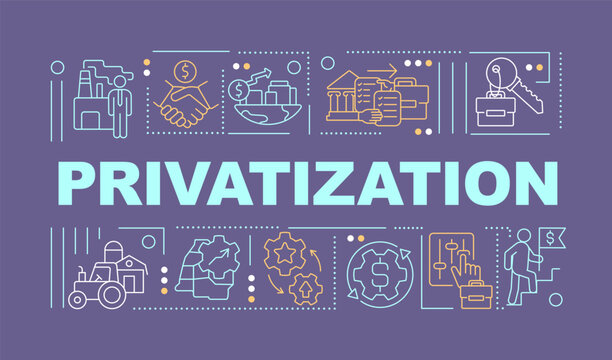Now Reading: Privatization of Public Enterprises and Its Implications on Economic Policy and Development
-
01
Privatization of Public Enterprises and Its Implications on Economic Policy and Development

Privatization of Public Enterprises and Its Implications on Economic Policy and Development
Keywords: Public Enterprises
Introduction
Privatization, the process of transferring ownership and control of public enterprises to private entities, has been a prominent economic policy approach across the globe. This article explores the implications of privatization on economic policy and development. By delving into the advantages and disadvantages of privatization(of Public Enterprises), we aim to provide a comprehensive understanding of this contentious issue.
I. Understanding Privatization
In this section, we define privatization and discuss its various forms, such as asset sales, equity sales, and contracting out. By explaining the reasons behind privatization, including improving efficiency, reducing the fiscal burden, and encouraging competition, we lay the groundwork for the ensuing analysis.
II. Advantages of Privatization
1. Increased Efficiency and Productivity
Privatization often leads to enhanced efficiency and productivity in formerly public enterprises. Private ownership fosters competition, innovation, and a profit-driven mindset, prompting companies to operate more efficiently, cut costs, and improve service delivery.
2. Better Allocation of Resources
Private enterprises tend to allocate resources more effectively due to their profit-oriented nature. Market forces play a significant role in determining the allocation of resources, leading to more optimal use of capital, labour, and other inputs.
3. Stimulated Economic Growth
Privatization can spur economic growth by attracting private investment and stimulating entrepreneurship. Private companies typically bring in new technologies, managerial expertise, and capital, thereby creating jobs and boosting overall economic activity.
4. Fiscal Relief for Governments
Governments burdened by large Public Enterprises can benefit from privatization by transferring the financial responsibility to the private sector. The sale of public assets generates revenue that can be utilized to reduce public debt, invest in priority areas, or fund social programs.
III. Disadvantages of Privatization
1. Potential Loss of Public Control and Accountability
Privatization(Public Enterprises) raises concerns about the loss of public control over essential services. Private companies prioritize profit maximization, which can lead to reduced accessibility, increased prices, or neglect of socially disadvantaged groups. Proper regulation is necessary to maintain accountability.
2. Job Losses and Labor Concerns
During the privatization process, workforce reductions and layoffs may occur, resulting in social and economic hardships for employees. Moreover, private companies may adopt cost-cutting measures that compromise workers’ rights and benefits. Safeguarding labour interests is crucial to mitigate these negative consequences.
3. Monopoly and Market Concentration
Privatization(of Public Enterprises) can sometimes lead to market concentration and the emergence of monopolies or oligopolies. This concentration of power may reduce competition, limit consumer choices, and result in higher prices. Antitrust measures and effective regulation are necessary to maintain fair market conditions.
4. Potential for Corruption and Lack of Transparency
The privatization process may be vulnerable to corruption and lack of transparency. Unscrupulous practices such as insider deals or inadequate valuation of assets can undermine the benefits of privatization. Implementing transparent and accountable procedures is essential to prevent such malpractices.
IV. Policy Considerations for Successful Privatization
1. Robust Regulatory Framework
Establishing a comprehensive regulatory framework is crucial to ensure fair competition, protect consumer interests, and prevent abuses of market power. The regulatory body should be independent, transparent, and capable of enforcing regulations effectively.
2. Social Safety Nets and Worker Retraining Programs
To address the social impact of privatization, governments must implement social safety nets and retraining programs to support displaced workers. These initiatives can provide financial assistance, reemployment opportunities, and skill development to facilitate a smooth transition.
3. Strategic Approach to Asset Sales
Governments should adopt a strategic approach to asset sales, considering factors such as market conditions, industry viability, and long-term economic goals. Proper valuation, transparent bidding processes, and sound contractual agreements are vital to maximize returns and ensure positive outcomes.
Conclusion
Privatization of public enterprises presents both opportunities and challenges. While it can enhance efficiency, stimulate economic growth, and relieve fiscal burdens, the potential risks of reduced accountability, job losses, and market concentration must be addressed. Implementing a robust regulatory framework, safeguarding labour rights, and promoting transparency is crucial for successful privatization that contributes to sustainable economic policy and development.
Read Also: E-Mail Marketing: Analyzing the 5 Significance of Email in Marketing














